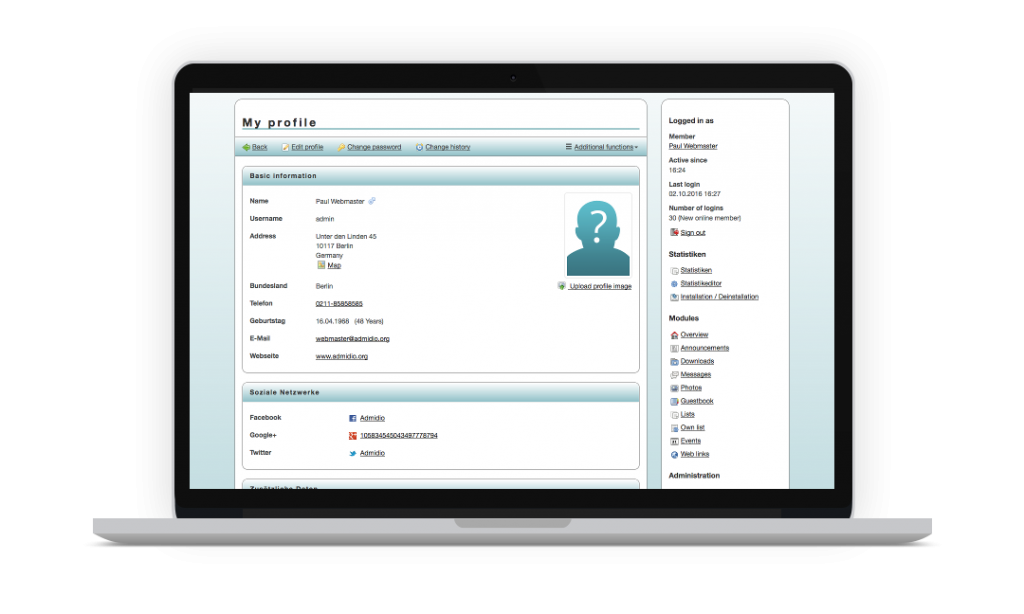
As an association, you obviously want high levels of recruitment, engagement, and retention, but reaching these goals isn’t always easy. For one, your members’ needs and expectations are constantly changing and shifting. Moreover, each of your members has probably joined your association for different reasons and with different goals in mind.
So, how do you tailor each member’s experience so it’s the most rewarding for them? And encourages them to continue renewing their membership? It all boils down to one thing: understanding your members. And the best way to do this? Member journey mapping.
Member journey mapping is an effective way of seeing your members’ experience from their point of view. Member Journey maps are an outline of each step of the member experience. It should start from their first interaction and subsequent engagement all the way through to, hopefully, a lifelong relationship.
Quick Reads
First Interactions

The first few months of membership with your organization will leave a lasting impression on your members, be it good or bad. Therefore, it's vital that their first experiences with your association are remembered for the right reasons. Never forget, first impressions matter, and you never get a second chance to make a good first impression.
Registration
The first step of member journey mapping is to map out the sign-up process and consider how it could be improved. First, is it easy to find the registration form on your website? Second, is the sign-up process simple and quick to fill out? In this day and age, people are accustomed to being able to do anything and find anything almost instantaneously. If the sign-up process is too time-consuming, potential members may give up on registering.
So, when mapping out the registration process, make sure there are clear links to your registration form and make the form itself as concise as possible, while still collecting all the necessary information.
Onboarding Process
Next, you’ll need to map out the onboarding process. Consider, is it clear and concise for each member? And does it present them with information that will help them to settle in and know what to expect?
We’d recommend welcoming a new member with a specially curated onboarding packet. This should include information on how to access the member portal, join a committee, access important documents, and register for an event. Also, if possible, you could ask longtime members to link up with new members. They can share their own experiences as well as answer any questions the new member has.
First 90 Days
The first 90 days of membership is a critical period for making a good impression with a new member. So, I can’t stress enough how important it is for you to map out this period. Within these 90 days, your aims are to educate new members about your association, to find out why they joined, and to engage them so they feel like they belong.
When educating your members about your association, you want to make sure they understand the benefits you offer and how to start taking advantage.
Understanding why a new member joined is vital to tailor the experience for them. For example, if a new member joined with the aim of making professional connections, then you’ll want to keep them informed of upcoming networking events.
Finally, once your members are educated about your association and you know why they joined, you’ll know how to engage them.
Member Profiling

Understanding different member profiles ideal to your association is essential when member journey planning. Each member profile likely has different needs and expectations of their membership to your association, so it’s important you fulfill each individual’s requirements of you.
Member Personas
Member Personas are semi-fictional representations of your ideal members based on market research and real data about existing members. They represent the goals, challenges, and pain points of different member types. But what is their role in member journey mapping? By understanding when a member will need certain benefits over others, you can better message the value you provide to them. This tangible value will encourage your members to renew their memberships every year.
While there are many ways to profile members, a consistently helpful way to look at them is based on where they are in their careers. For example, a member early in their career might need your association to network and learn more about the industry. Whereas, a member later in their career may need your help to keep up with new trends and best practices.
Data
While you definitely want to talk to your members to create your member personas, you also want to pay attention to what your members are actually doing. Based on the events they attend, workshops they sign up for, and committees they join, you can see where different members engage most with your association. This will help you to map a member’s journey as well as construct member personas.
Member Paths

As you develop member profiles, you should include questions that will help you gain a better understanding of how they found you and how they prefer to interact with you. Using this information to create member paths is an important part of member journey mapping.
Although younger members may be happy to receive all communication digitally, older members may wish to receive information through more traditional channels, such as a renewal notification in the mail. Understanding these different preferences is an opportunity to ensure the best conversion rate on both new member sign-ups and renewals.
Below are two sample paths. In each case, a known group is being targeted with the information most relevant to them in the medium they are most likely to consume it.
New Young Member
Initially becomes interested in your association because of an article posted on social media. They then come to your website to learn more about your association, which encourages them to sign-up via the online registration form. After signing up, they are emailed a package outlining all the relevant benefits they can now access and how. They follow the tracked links in the email to find out more.
Existing Older Member
When the time for renewal comes around, they receive a renewal notice in the mail, with a self-addressed stamped envelope. The renewal notice comes as part of a renewal package that mentions upcoming events, recent industry data, and other information relevant to the profile of an older member.
Member Nurture

Once you have acquired new members, you now wanted to focus on retention and renewals. Renewals are the lifeblood of any organization because they provide an ongoing revenue stream. Moreover, the renewal rate is also a useful indicator of how satisfied your members are with your association. Therefore, an essential part of member journey mapping is the journey your existing members are experiencing.
Contact
Planning your communications with members, both new and old, is vital. Every contact between your association and your members should meet, if not exceed, their expectations. Moreover, these communications should adapt as your members' expectations and needs change. Every letter or email you send should possess information that is valuable to that individual member.
Engagement
Engagement with your longstanding members is an important part of member journey mapping. It is far easier to engage with and map the journeys of your longstanding members. Not only do you know their member persona and member path, you have also had time to collect their personal data. You now know what events they like to attend, what workshops they sign-up for, and the committees they have joined. Moreover, you can see their engagement over time, its peaks and troughs, and therefore understand what encourages their renewals and engagement. So, use this information to create a unique experience and journey that will keep them renewing.
Member Personalization

In a study by Accenture, 56% of consumers admitted to being more inclined to patronize a retailer if it offered a personalized experience. The same logic applies to association memberships. Personalization allows you to offer each of your members a unique and tailor-made experience that will encourage them to renew.
Member personalization is more exact than member profiling: instead of grouping similar members under one persona, personalization focuses on each individual member. However, due to this, it requires the collection of data from each individual, and is, therefore, more suited to longstanding members of your association.
Surveys
One of the best ways to collect data about your members is through the use of surveys. You can choose to do a simple free online survey, or you can get more detailed with a Personalized URL (PURL) campaign. The advantage of a PURL campaign is that you can personalize the questions based on the member’s answers.
Surveys are a good way of collecting data from new members as well as longstanding members. I’d recommend asking new members to fill out a survey 90 days into their membership to learn more about them individually and collect their data so as to start personalizing their experience.
Data
Collected member data is another key source to aid in personalization. Knowing where they engage the most with your association can help you to personalize their membership experience. With the use of data capture, you can send out personalized content relevant to them. This could include recommended courses, events, and job opportunities.
On top of this when communicating with members, instead of sending out mass communications, add a personal feel. This could be as simple as adding members' names to messages or sending out a birthday message.
Back to you
Now, you may be thinking that all of your members are so different, it’s impossible to create one journey map for them all, and I completely agree. So, you’ll probably want to create several member journey maps that represent your different member personas. Not all members are the same, and you want your member journey map to be as accurate as possible.
Our final piece of advice is to always keep in mind why you are member journey mapping: it’s all about engaging your members at the right time through the right medium so that they want to renew. For more tips on how to engage your members and ensure that they renew, check out our post, 10 Ways To Improve Your Association’s Membership Experience.
If you'd like to really impact your member's lifecycle, consider booking a demo with us so we can show you how an all-in-one membership management platform can boost your engagement and reach your goals with ease.



